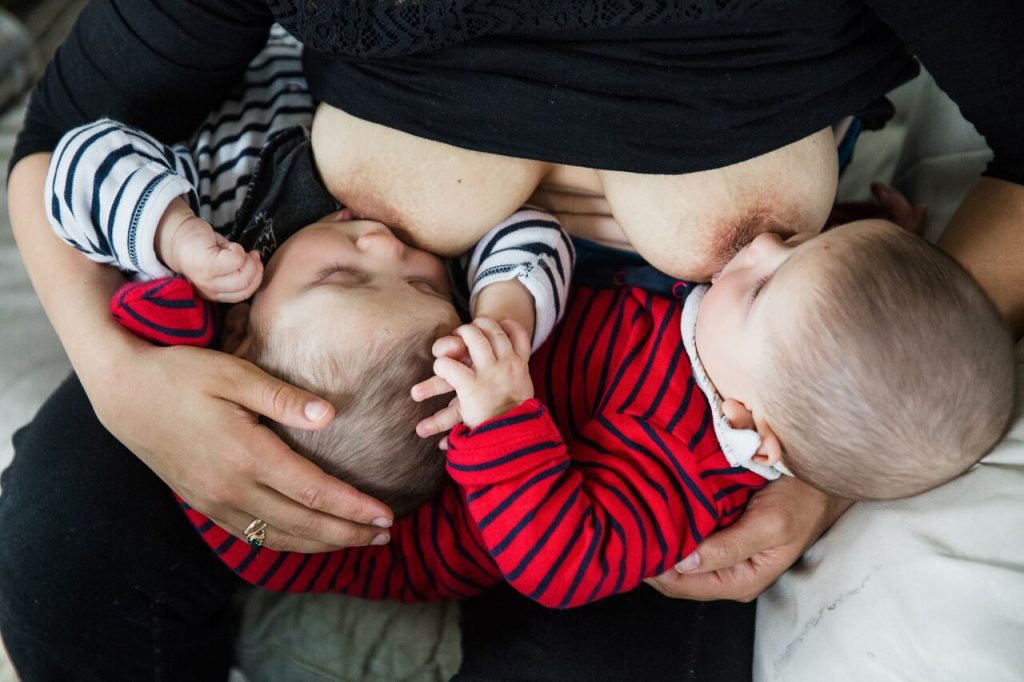Gina Brocker is a documentary photographer based in Boston. Her photo essay, Latched On, depicts the realities of breastfeeding in our modern culture. It has just been published in Time and Globe and Mail.
Gina Brocker writes, “With my ten-month-old son strapped onto my front and camera in hand, I squeezed into Monica’s SUV. I began to document her feeding her sixteen-month-old daughter following the regular afternoon pick up of her older daughter. Marlin was snug in her lap nursing, while three-year-old Simona climbed to the front of the car to see what other entertainment she could find. Kids songs played on the speakers and the cracked windows let just enough breeze in. They were parked outside the Arnold Arboretum, in Boston, hoping to take advantage of the spring weather.”

“As I sit here multi tasking at afternoon pick up with the older sister occupied and Marlin happily suckling in my lap I realize that breastfeeding isn’t always “beautiful”in the aesthetic sense. What I love about it is the raw immediacy. A procrastinator and unplanner by nature, breastfeeding fits my lifestyle perfectly. Nothing to remember, nothing to clean just my ladies and my baby. It’s not uncommon for me to have Marlin in the wrap or sling feeding while playing with big Sister Simona at a playground or while running errands. Breastfeeding provides me with that sort of freedom and also empowerment. I don’t think it was by mistake that God designed our bodies to be sufficient. When all is stripped away I am still enough for my babies and that is powerful. That feeling of empowerment is what continues to propel me through the unknowns & trials of parenthood with confidence.”
– Monica, Canton, Massachusetts



Breastfeeding is a choice and commitment. With its many rewards, comes challenges and sacrifices. Physical pain, being constantly on call and the unbalanced caregiving between you and your partner to name a few. Battling outside criticism and judgment is often another hurdle families have to face. Often mothers feel pressured from their own families to stop breastfeeding once their baby gets to a certain age. Partners have suggested that it’s inappropriate to nurse in certain public settings. One mother had laughing teenage boys photograph her while breastfeeding on public transportation.



According to the National Center for Chronic Disease Prevention and Health Promotion, in the US, 81.1% percent of babies are breastfeed and 51.8% of them make it to six months. Of this 51.8%, roughly one-fourth are exclusively breastfed, meaning no formula was used. Throughout the rest of the world, an average of 43% of babies are exclusively breasted until sixth months of age. This past Spring, the US opposed a resolution to encourage breastfeeding in Geneva for the United Nations-affiliated World Health Assembly. A stark contrast to the Obama administration which supported the World Health Organization’s longstanding policy of encouraging breastfeeding. A 2016 study in The Lancet found that universal breastfeeding would prevent 800,000 child deaths a year globally, save $300 billion in health care cost and improve economic outcomes for those raised on breast milk.



After personally navigating uncomfortable and challenging situations, the need to share the realities of breastfeeding led me to begin this project. Usually worn in a wrap, and often nursing, my son, and later, daughter, and I ventured into over 50 Boston-based families’ homes and lives to document their typical breastfeeding routines. Hearing from the various caregivers reaffirmed how crucial sharing their experience is. Knowing the realities of breastfeeding empowers families and normalizes this very natural and beneficial part of life. You can follow Gina Brocker’s entire project at her website.












